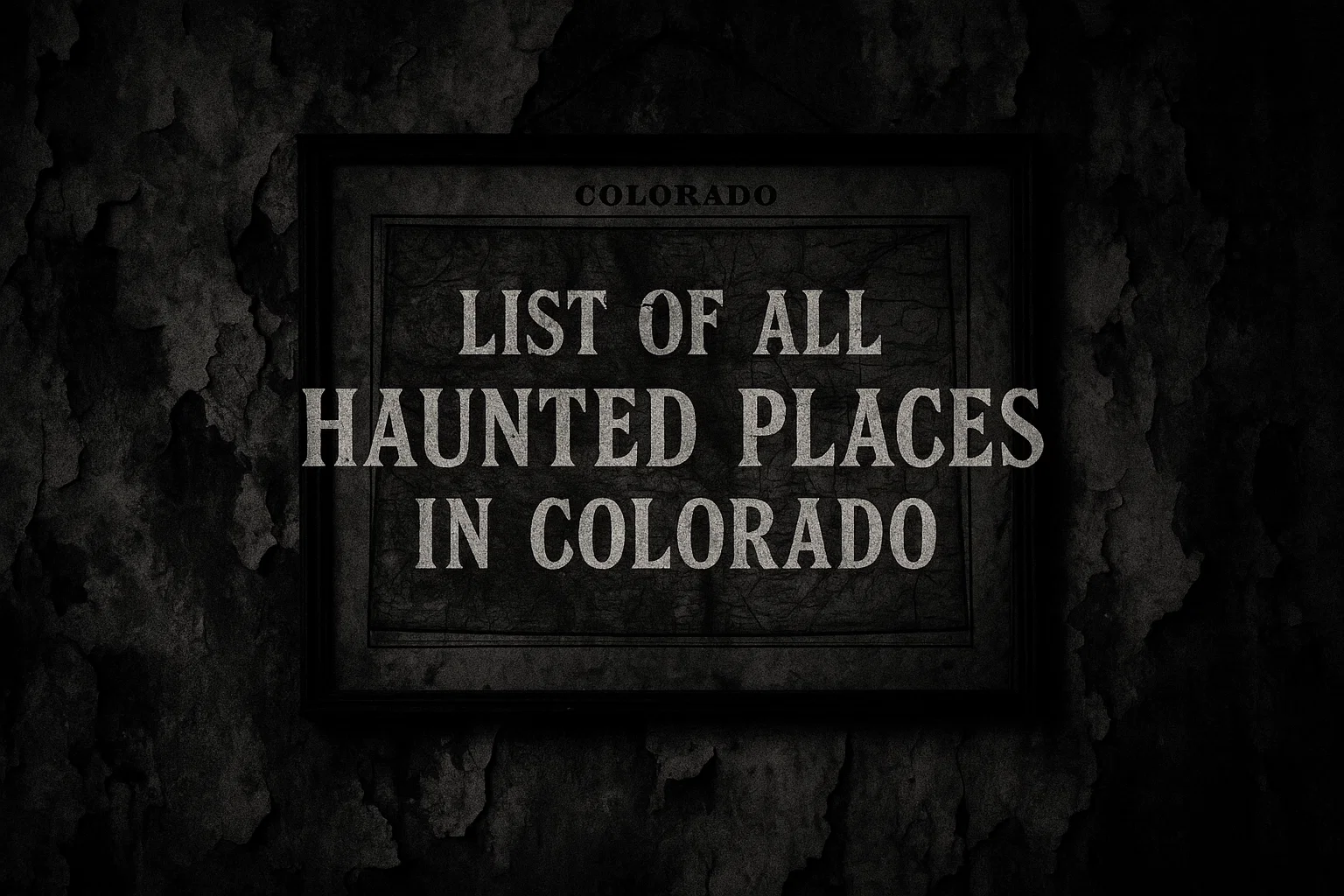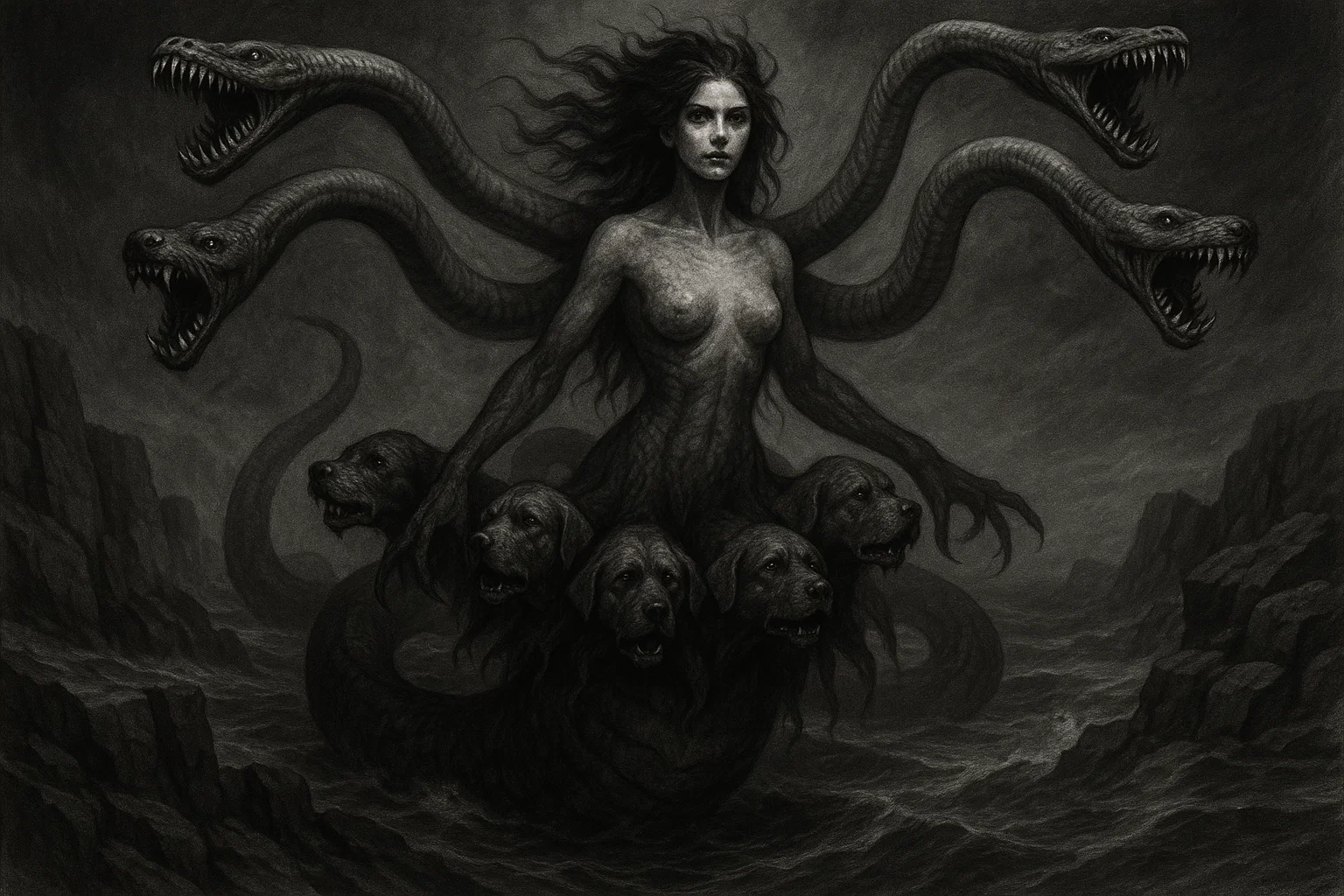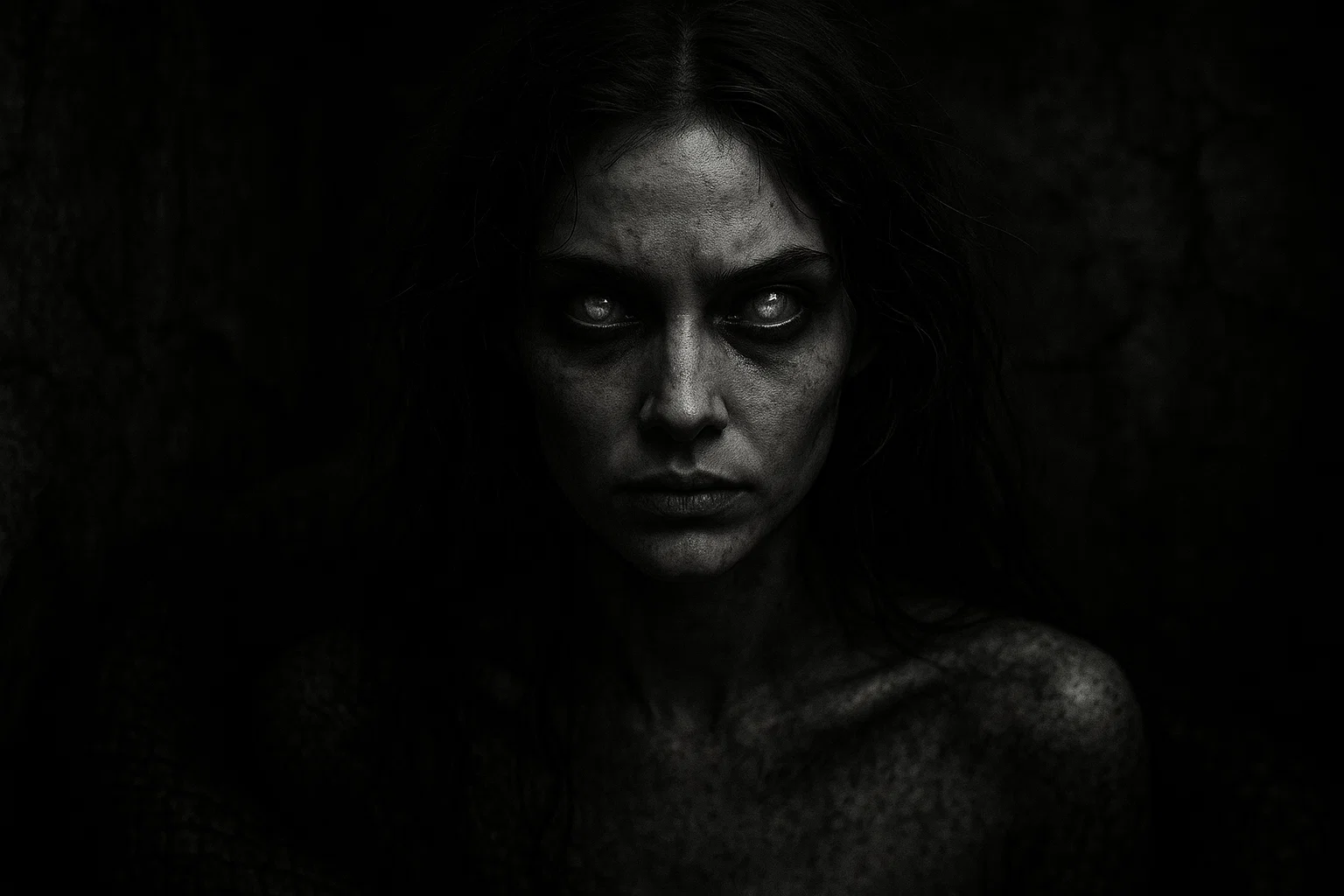The Auvergne Werewolf case of 1558 is a ghastly historical saga from a village near Ryon, in France’s Auvergne region, where a woman was accused of transforming into a ravenous wolf and executed for witchcraft and lycanthropy.
Chronicled by demonologist Henri Boguet in his 1602 treatise Discours des Sorciers, the tale begins with a hunter severing a wolf’s paw, only to find it transformed into a woman’s hand bearing a ring belonging to the hunter’s wife.
Her coerced confession to attending a Sabbat—a diabolical witches’ gathering—and her subsequent fiery execution at the stake encapsulate the superstitious panic of 16th-century France.
This haunting narrative unveils the judicial savagery and communal dread of an era where wolf attacks and occult fears fueled tragic scapegoating, offering a vivid lens into the witch-hunt fervor that claimed countless lives.
Summary
Overview
| Aspect | Details |
|---|---|
| Name | Auvergne Werewolf (unnamed woman, referred to as Marie Laurent in folklore) |
| Location | Village near Ryon, Auvergne, France; ~two leagues from Apchon |
| Year | 1558 (documented by Henri Boguet in 1602) |
| Occupation | Housewife, married to a gentleman of modest wealth |
| Family | Wife of Jacques Laurent (gentleman); possibly mother to young children |
| Crimes | Accused of shapeshifting into a wolf, attending a Sabbat, implied cannibalism and livestock attacks |
| Victims | No confirmed human deaths; ~10–15 livestock (sheep, goats); suspected human attacks |
| Modus Operandi | Alleged transformation via occult ritual, attacking with claws and fangs |
| Discovery | Hunter Pieter Dubois severed wolf’s paw, revealing a woman’s hand with a ring |
| Witnesses | Pieter Dubois (hunter), Jacques Laurent (husband), Anna Dubois, Henri Moreau |
| Key Figures | Marie Laurent (accused), Pieter Dubois, Jacques Laurent, Jean Fournier (magistrate), Father Michel (priest) |
| Sentence | Burned alive at the stake, 25 March 1558 |
| Primary Source | Henri Boguet’s Discours des Sorciers (1602) |
| Secondary Sources | Auvergne oral traditions, 16th-century chronicles, folklorist retellings |
Who Was the Auvergne Werewolf?
The Auvergne Werewolf, known in local folklore as Marie Laurent, was an unnamed woman in her late 30s or early 40s, living in a village near Ryon, Auvergne, in 1558.
As the wife of Jacques Laurent, a gentleman of modest wealth—likely a landowner or minor official—she managed a bustling household, possibly raising young children. Described as reserved and pious, she was outwardly a model housewife, tending to domestic chores and attending church.
Yet, village whispers painted her as enigmatic, with solitary walks in the twilight forests sparking suspicion. Her high social standing made her accusation shockingly scandalous, as witchcraft charges typically targeted outcasts.
Marie’s life was likely shaped by the rural rhythms of Auvergne, a region of craggy hills and dense woodlands plagued by wolf packs. Her gentleman husband held influence, yet her gender made her vulnerable to witch-hunt paranoia, which often cast women as sorceresses.
Rumors of her herbal knowledge or sharp tongue may have fueled village distrust, common traits of those accused. Her tragic transformation into a lycanthropic monster in the eyes of her community reflects the era’s gendered fear of female deviance, cementing her as a scapegoat for unexplained horrors.
You May Also Like: Werewolf Bloodline? The Dark Truth of the Gandillon Family
Auvergne Werewolf’s Story
In early 1558, a village near Ryon, two leagues from Apchon, was a cauldron of dread. The witch-hunt era, claiming ~100,000 lives across Europe, cast a pall over Auvergne, where wolf attacks and famine stoked superstitious terror.
The Auvergne Werewolf saga began on 10 March 1558, when Pieter Dubois, a seasoned hunter, ventured into the shadow-haunted forests. Ambushed by a colossal wolf—its bristly pelt reeking of decay and eyes glowing like infernal embers—Dubois fired his musket, but the invulnerable beast lunged.
In a desperate struggle, he slashed with his hunting knife, severing the wolf’s fore-paw. Gushing crimson, the creature shrieked in unholy agony and fled into the murky thickets.
Early Life and Background
Marie Laurent, born around the 1510s, grew up in a rustic village near Ryon, likely as a peasant’s daughter before marrying Jacques Laurent in her 20s.
Her marriage elevated her to a gentlewoman’s status, granting a modest estate with servants. She was known for meticulous housekeeping and devout faith, but her solitary forays into the woods—perhaps to gather herbs—drew suspicious glances.
Neighbors whispered of her piercing gaze and aloof demeanor, traits that later fueled accusations. As a mother (folklore suggests two young children), she was fiercely protective, yet her high standing did not shield her from the witch-hunt zeal sweeping France.
Crimes and Accusations
Marie’s coerced confession, extracted under torture, claimed she transformed into a wolf to attend a Sabbat on 7 March 1558, a blasphemous revelry of witches and demons.
She admitted shapeshifting through an occult ritual—possibly a chanted spell or anointed salve—and implied cannibalistic feasts. While no human deaths are confirmed, she was accused of mauling livestock, with gruesome evidence mounting.
On 5 March, farmer Henri Moreau found five sheep eviscerated, their throats gouged and entrails spilling like ghastly garlands.
On 8 March, goatherd Claude Bisset reported three goats ripped asunder, their flanks torn and bones splintered. Estimates suggest 10–15 livestock killed, their blood-drenched carcasses fueling village hysteria.
Suspicions of human attacks emerged. On 3 March, villager Anna Dubois claimed a spectral wolf with snarling jaws chased her daughter, leaving claw marks on a barn door.
A peddler, Jean Roux, vanished on 6 March; his tattered cloak, soaked in gore, was found near the forest, hinting at a savage mauling. These terrifying incidents painted Marie as a wilkołak—the regional term for a werewolf—driven by Satanic malice.
Her confessed Sabbat attendance, where she danced with fiends and devoured flesh, cemented her as a monstrous sorceress.
The transformed paw was the pivotal accusation. On 10 March, Dubois, trembling, presented the severed limb to Jacques Laurent at his estate. To their stupefied horror, it was a woman’s hand, its slender fingers adorned with a gold ring Laurent recognized as his wife’s.
Rushing home, he found Marie cowering, her arm wrapped in a blood-soaked apron, revealing a festering stump. This ghoulish discovery confirmed her lycanthropic guilt, igniting public outrage.
Discovery and Community Response
The horrific find on 10 March sparked village-wide panic. By 11 March, rumors of a werewolf spread, with Anna Dubois and tavern keeper Marie Bisset recounting eerie howls and shadowy beasts.
On 12 March, Father Michel, the village priest, led firebrand vigils, ringing church bells to exorcise evil and preaching against diabolical pacts.
Parents barricaded homes, and armed patrols, led by militia captain Guillaume Fournier, scoured the moonlit forests, wielding blessed silver to repel demonic predators. The palpable dread silenced markets and taverns, as villagers awaited justice.
Jacques Laurent’s accusation on 11 March intensified the chaos. Confronting Marie, he denounced her as a werewolf, her bleeding stump irrefutable proof. Neighbors, once cordial, turned hostile, pelting the Laurent estate with stones.
On 13 March, magistrate Jean Fournier ordered her arrest, dispatching militiamen to seize her. The public clamor for retribution ensured a swift trial, reflecting the era’s zealous crusade against supernatural threats.
You May Also Like: Who Was the Werewolf of Klein-Krams?
The Hunt and Arrest
The hunt for Marie was brief but fraught with tension. On 13 March, militiamen, led by Guillaume Fournier, stormed the Laurent cottage, finding Marie huddled in a dark corner.
Her mutilated arm, oozing dark ichor, silenced skeptics. Shackled and sobbing, she was dragged to Ryon’s dank gaol, her gold ring confiscated as evidence. Jeering crowds lined the streets, hurling rotten refuse and cursing her as a sorceress.
The transformed hand, preserved in a sealed box, was displayed to villagers, igniting mass hysteria. No other suspects were pursued, as the confession and physical proof targeted Marie alone.
Auvergne Werewolf’s Werewolf Trial
The trial of Marie Laurent, the Auvergne Werewolf, held in Ryon from 20–22 March 1558, was a macabre spectacle emblematic of werewolf witch trials.
Charged with witchcraft and lycanthropy, she faced a merciless court driven by superstitious zeal and tortured confession. Overseen by magistrate Jean Fournier, the swift proceedings offered no clemency, sealing her doomed fate in a flame-wreathed pyre.
Capture and Interrogation
Marie’s arrest on 13 March marked the start of her harrowing ordeal. Confined in a vermin-infested cell, she endured relentless interrogations by Fournier and Father Michel.
On 14 March, thumbscrews crushed her fingers, drawing blood and screams, while sleep deprivation clouded her mind.
By 15 March, hot irons seared her flesh, leaving charred welts, as interrogators demanded occult details. Under excruciating torment, she confessed to shapeshifting on 7 March using a diabolical salve, transforming into a wolf to attend a Sabbat.
Her anguished account, scribed by clerk Pierre Dubois, described ravenous feasts with demons, devouring human flesh in a blasphemous rite.
On 16 March, the rack stretched her sinews until joints popped, and water torture—forcing gallons down her throat—nearly drowned her. These barbaric methods produced a vivid confession: she mauled livestock and stalked villagers, driven by Satanic urges.
The transformed hand, displayed in court, was irrefutable proof, its ring tying her to the severed paw. No witnesses saw her transform, but village testimonies—Anna Dubois’s claw marks, Henri Moreau’s slaughtered sheep—reinforced the lycanthropic charge.
Legal Proceedings
The trial began on 20 March in Ryon’s crowded courthouse, a theater of horror. Fournier, a stern witch-hunter, read Marie’s confession to a gawking throng.
Father Michel branded her a Satan’s consort, citing Sabbat revelry. Witnesses—Anna Dubois, Henri Moreau, Marie Bisset—recounted eerie howls, gore-soaked fields, and spectral sightings. Jacques Laurent, ashen-faced, testified against his wife, his ring on the severed hand sealing her guilt.
No defense was permitted, as accused witches were presumed damned. The lack of due process ensured conviction by 22 March, with superstition eclipsing reason.
You May Also Like: Who Were the Werewolves of Greifswald?
Sentence and Execution
On 22 March, Fournier sentenced Marie to be burned alive at the stake, a purifying ritual for witchcraft and heresy. The execution, set for 25 March in Ryon’s market square, drew ~2000 spectators.
At dawn, Marie, emaciated and shackled, was dragged through jeering mobs. Tied to a wooden pyre, she faced torches wielded by militiamen.
As flames roared, her flesh blistered, and agonized shrieks rent the air. The acrid stench of burning flesh choked onlookers, and her charred bones crumbled within minutes.
Her ashes were scattered across the windswept fields to prevent spectral return, a grim precaution. The public spectacle quelled village panic, though Jacques Laurent’s motives—possibly personal grudges—remained unscrutinized.
Auvergne Werewolf vs. Other Werewolves
| Werewolf Case | Region | Period | Accusation Details | Unique Element |
|---|---|---|---|---|
| Peter Stumpp | Bedburg, Germany | 1589 | Killed 16, including children; used magical belt; broken on wheel. | Massive victim count; elaborate execution with wheel and beheading. |
| Gilles Garnier | Dole, France | 1573 | Ate four children; demonic aid; burned at stake. | Famine-driven cannibalism; hermit lifestyle fueled suspicion. |
| Werewolves of Poligny | Poligny, France | 1521 | Three men ate children; devil’s ointment; burned at stake. | Group accusation; early use of ointment for transformation. |
| Jean Grenier | Bordeaux, France | 1603 | Boy attacked children; wolfskin gift; imprisoned as insane. | Youthful accused (14); leniency due to insanity plea. |
| Jacques Roulet | Angers, France | 1598 | Killed boy; salve transformation; deemed insane, not executed. | Insanity defense spared execution; found blood-covered. |
| Thiess of Kaltenbrun | Livonia, Estonia | 1692 | Fought devils as werewolf; whipped, banished. | Benevolent werewolf; claimed to be God’s Hound. |
| Beast of Gévaudan | Gévaudan, France | 1764–67 | Killed 100+; hunted, no human culprit; unresolved. | Cryptozoological mystery; massive national hunt. |
| Hans the Werewolf | France | 1582 | Livestock attacks; confessed, executed. | Obscure case; focused on rural livestock losses. |
| Werewolf of Châlons | Châlons, France | 1598 | Lured children; cannibalism; burned at stake. | Infamous cannibal; records destroyed to erase legacy. |
| Manuel Blanco Romasanta | Galicia, Spain | 1853 | 13 murders; lycanthropy claim; life imprisonment. | Modern psychological defense; Spain’s first serial killer. |
The Auvergne Werewolf shares cannibalistic accusations with Stumpp and Garnier, linking lycanthropy to diabolical horror. Her tortured confession mirrors Roulet and Grenier, reflecting judicial coercion.
The transformed paw is a unique motif, unlike Stumpp’s belt or Garnier’s demonic aid. Her female identity contrasts with most male-dominated cases, highlighting gendered witch-hunt biases. Unlike Grenier’s leniency, she faced lethal justice.
Was the Auvergne Werewolf a Real Werewolf?
The Auvergne Werewolf case is a documented werewolf witch trial, but no evidence supports literal shapeshifting. It is a tragic product of 16th-century France’s superstitious hysteria and judicial barbarity.
Historical Sources:
- Henri Boguet’s Discours des Sorciers (1602): The definitive source, recounting the hunter’s encounter, transformed paw, and Marie’s confession and execution. Boguet, a witch-hunting judge in Burgundy, claimed 600 executions, framing the tale with demonological bias. He cites a “reliable source,” likely a 1558 report or oral account from Auvergne.
- Auvergne Chronicles: Fragmentary records mention witch trials near Ryon in the 1550s, but none explicitly detail a werewolf case, limiting corroboration.
- Oral Traditions: Village tales, passed down and recorded by 17th-century folklorists, embellish the story, with variants citing 1588 or naming the woman Marie Laurent. These discrepancies reflect mythic inflation.
- Claude Seignolle’s Les Loups-Garous (1962): A modern retelling, drawing on Boguet, adds folkloric flourishes like cannibalistic feasts, but lacks primary evidence.
- Jean Beauvoys de Chauvincourt’s Discourse on Lycanthropy (1599): Provides context, arguing lycanthropy as a diabolical illusion or mental affliction, influencing Boguet’s views.
Accuracy and Inaccuracies
Boguet’s account confirms a trial and execution in 1558, likely for witchcraft. The transformed paw and ring are folkloric tropes, possibly inspired by real injuries (e.g., a severed hand or deformity) or fabricated by interrogators.
The confession, extracted via torture, is unreliable, as witch trials produced fantastical narratives. The Sabbat claim aligns with demonological stereotypes, not evidence.
Livestock maulings are plausible, given wolf attacks in Auvergne, but human victims lack documentation, suggesting exaggerated accusations. Jacques Laurent’s accusation raises questions—personal motives (e.g., marital strife) may have played a role.
Cultural and Historical Context
The witch-hunt era (15th–17th centuries) saw ~100,000 executions for witchcraft and lycanthropy, driven by religious fanaticism and social upheaval.
Auvergne’s wolf-infested forests fueled lycanthropy fears, as real predators were mythologized as wilkołak. The Sabbat motif, popularized by demonologists like Boguet, linked witchcraft to Satanic conspiracies. Women, seen as morally frail, were prime targets, with female lycanthropy cases rarer but highly sensational.
The French Wars of Religion (1562–1598) amplified paranoia, making scapegoats like Marie Laurent easy prey.
You May Also Like: The Forgotten Werewolf Case of Henry Gardinn
Modern Analysis
Scholars view Marie as a victim of judicial hysteria. Clinical lycanthropy, a psychiatric condition where individuals believe they transform into animals, is possible but unproven, as no medical records exist.
More likely, a wolf attack or human crime (e.g., livestock theft) was misattributed to supernatural causes. The transformed paw echoes folklore tales of severed limbs revealing witches, suggesting mythic embellishment.
Marie’s high status and gender made her a paradoxical target, reflecting social tensions—perhaps envy or marital discord fueled her accusation. Her execution was a communal purging, satisfying primal dread but claiming an innocent life.
Conclusion
The Auvergne Werewolf case is a mesmerizing relic of 16th-century France’s superstitious psyche. Marie Laurent’s coerced confession to lycanthropy and fiery demise mirror a world where fear eclipsed reason.
Not a real werewolf, she was a scapegoat for unexplained horrors, her tragic fate a testament to the witch-hunt era’s brutal excesses. Preserved in Boguet’s Discours des Sorciers, this chilling saga endures, illuminating humanity’s eternal struggle to confront the unknown through myth and punishment.







